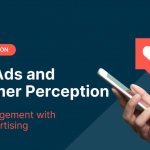All we can do now is try to understand the emerging scenario. Each business will need to assess its priorities.
By Prasoon Joshi
There is a blanket of despondency over the business impact of COVID, especially so in the advertising and media industries. There are concerns about communication campaigns being among the first casualties of budget cuts by the struggling client community. There is worry about the demand side, with consumer spends on non-essentials curtailed. There is anxiety about market sentiment and animal spirits being doused.
Winter is not just coming. It is here. Will 2020, and much of 2021, be a balance-sheet washout? Will the pandemic forever alter the will and the wallet, and determine who will survive and in what shape? No easy answers here.
All we can do now is try to understand the emerging scenario. Each business will need to assess its priorities. For many categories, this is the right time to hunker down and self-examine.
But postrecalibration action is important. Not to proactively engage has to be a calculated call, not a default one. For, to not communicate with consumers at this juncture can be a folly. And I say this beyond Henry Ford’s homily, ‘A man who stops advertising to save money is like a man who stops a clock to save time.’ Purely in the context of the consumer, a rare opportunity is here.
For long, we in our industry have been in the work of humanising brands, because people don’t consume products, they consume emotions, images and ideas. Brands are like people around whom we create a world. And without a story, a brand is dead. Carving out the brand, its persona and etching a relationship between the brand and its consumers through the idiom of storytelling has been central to big brands.
People don’t just buy merchandise. They do so because they connect with why you are in this business, what you stand for, and the stories you reveal and share. Marketing is also no longer about selling the stuff you make, but sharing ajourney that resonates. An authentic story well told garners from consumers something elusive and precious: emotional investment.
Be it Coca-Cola and Santa, or the ‘Thanda Matlab…’ series, Nike, Apple, Tata Steel, Happydent or Incredible India, these are brands built on compelling storytelling.
Listeners Now Storytellers
However, over the last few years since social media exploded into our lives, brand storytellers have found themselves faced with a tough challenge. As media and platforms multiplied, technology and formats changed by the minute, a variety of content burgeoned, some studies underlined that the attention spans of humans dropped to an average of 8 seconds, less than that of a goldfish.
Brands struggled with clickbait, shock value, ‘frontloading’ the communication — that is, the main product benefit to be put across in the first 5-7 seconds. The seminal factor, however, was a defining one — the consumer became least interested in hearing the brand story. Instead, the consumer wants to tell his or her story. The selfie, Snapchat, Instagram digital native is the hero in his or her story, one that must reach out to gazillions in quick successive periods. In a generation where everyone became the storyteller, where were the listeners? Then came the Covid-19 pandemic.
Life, as we knew it, hit the pause button. Catastrophe, be it for a country, company or a human, portents change. When things are in their most perilous state, new ideas and innovative solutions germinate. After the 2008 financial crisis, we saw the emergence of new multibillion-dollar businesses like Airbnb, Uber, Instagram and WhatsApp. Many of these may have been accelerated by entrepreneurs who found it a challenge to land up regular highpaying jobs in the corporate sector’s recession phase.
Today, some brands and businesses have tried to remain connected, like a soap brand with shops all over Britain opening up their stores for people to walk in and wash hands, clarifying that they need not purchase anything to do so. Others closer home like Dettol and Britannia, too, have been quick on their feet to connect. But at the centre of it all remain the consumers. Who suddenly find themselves with a rare commodity: non-scheduled time. During this slowdown, the bloated sense of self and the numbing cocoon of ‘work hard and party harder’ has receded into the background.
The selfstories seem to have lost some of their glossy, slippery charm. Many have discovered their own homes during this lockdown. The dust has been cleaned off an old musical instrument, new hobbies discovered, health prioritised, relationships focused on, be it family or self. For years, the one thing that marketers have based their efforts, energy and money is that of a captive target audience. Well, here we literally have a captive target audience now.
Now That They’re Attentive
Many of my brainstorming sessions with clients now focus on long-term objectives, rather than what people may consider to be a ‘stop-gap’ approach. After all, this gift of time at hand has cleared up spaces in homes and minds. It’s not just what and how the story is told, but also to whom. Narratives need communities, those willing to lend their ear.
The consumer right now is ‘stationary’, with more time to breathe, to focus, to see and to listen. The canvas finally has white space, more room. With the deafening noise of the drums faded, the gentle flute can be heard. Brands would be myopic to let go of this opportunity to weave and strengthen their relationship with consumers, to tell their brand story gently with empathy and relevance.
Because for a change, there are listeners. So, don’t be absent. Show up.
The writer is chairman, Asia Pacific, & CEO, McCann Worldgroup India
MARKETING Magazine is not responsible for the content of external sites.









